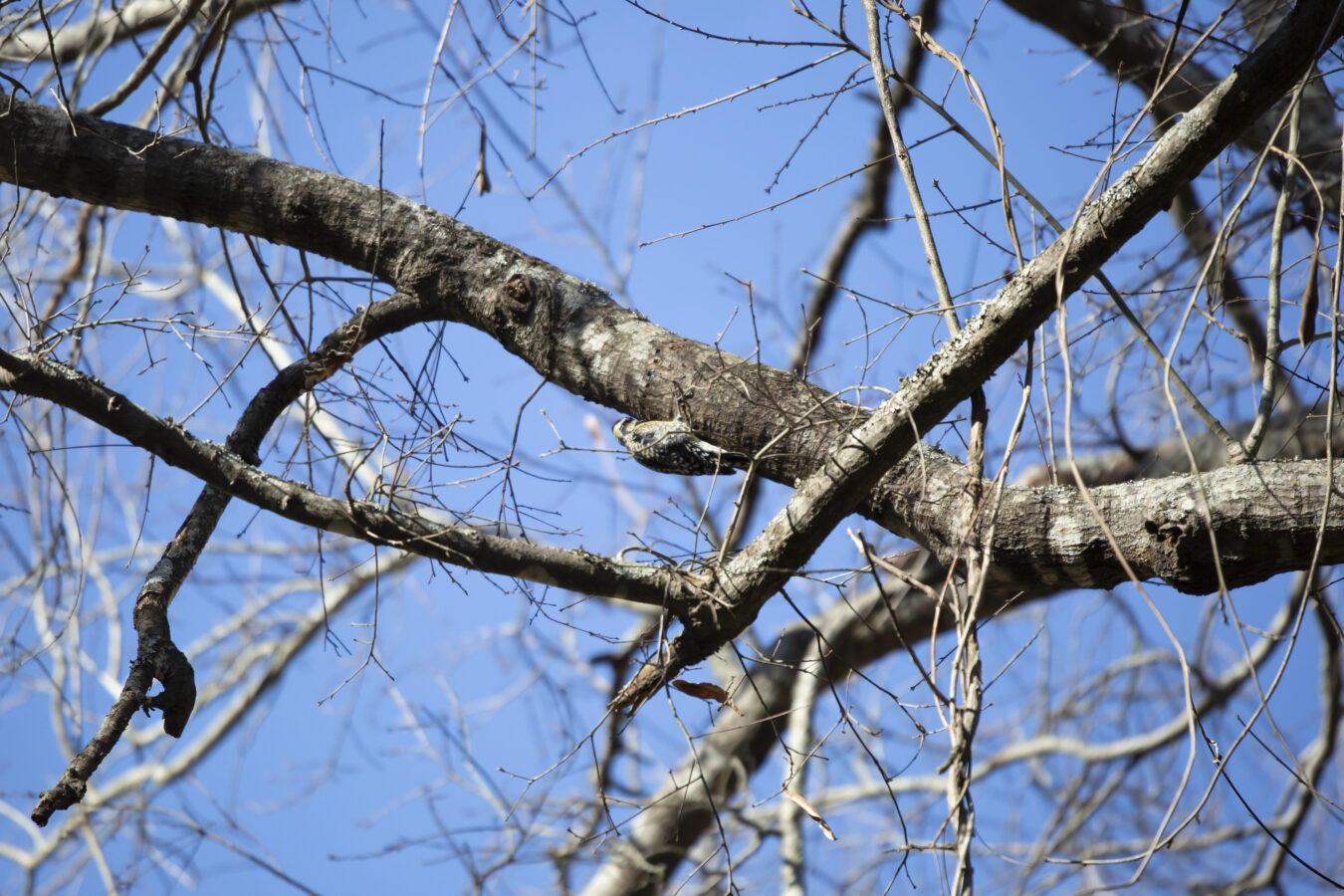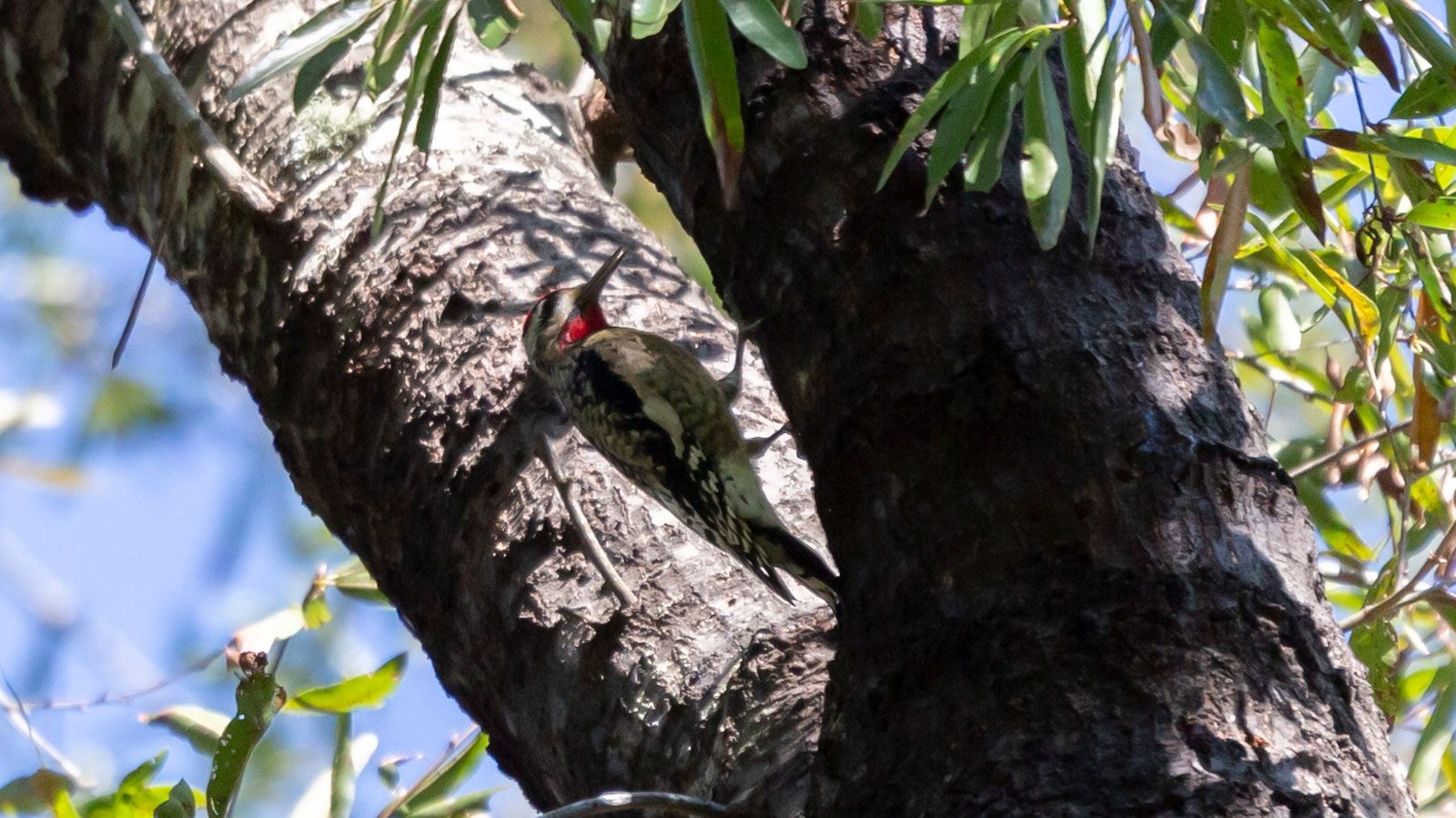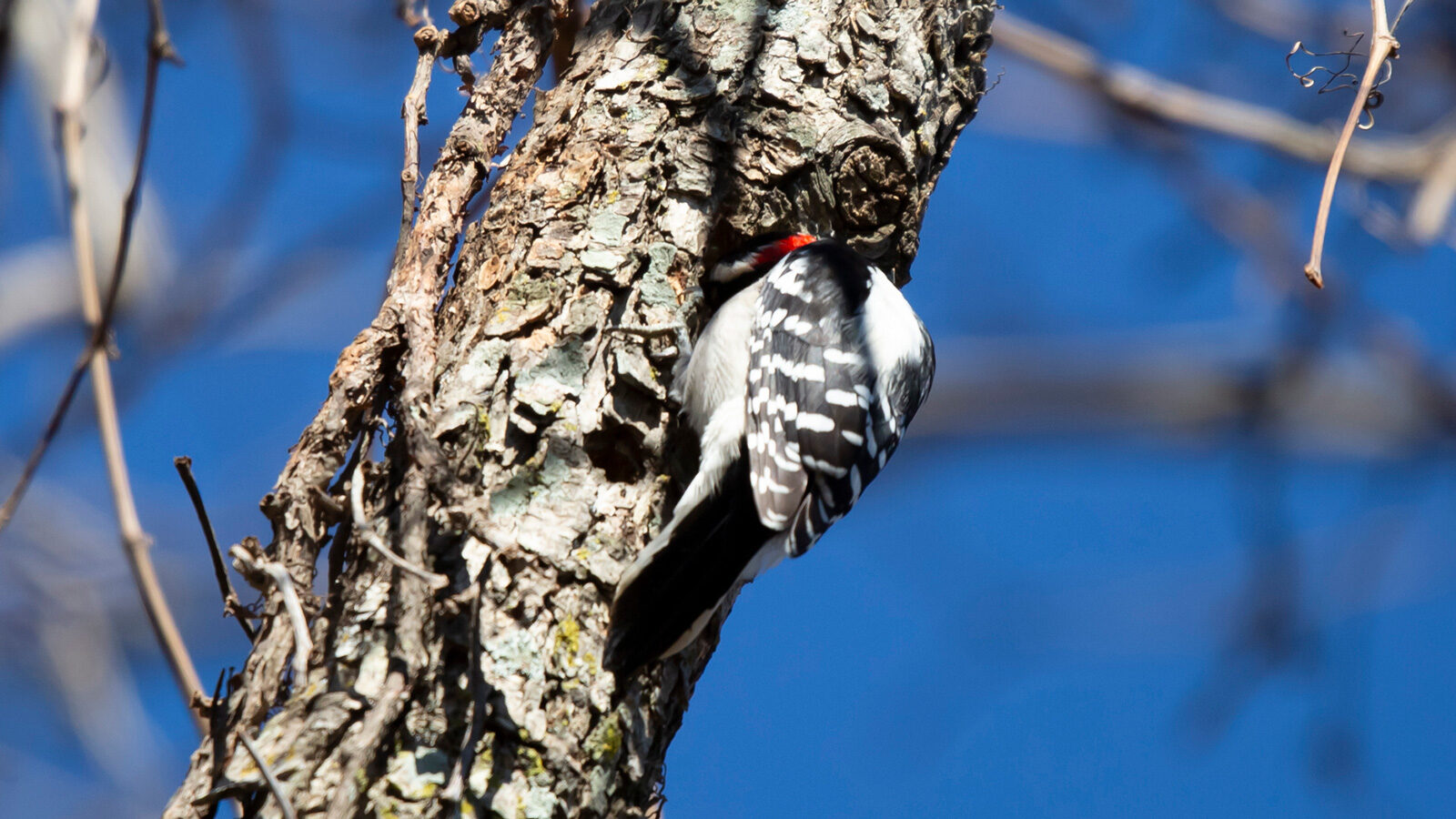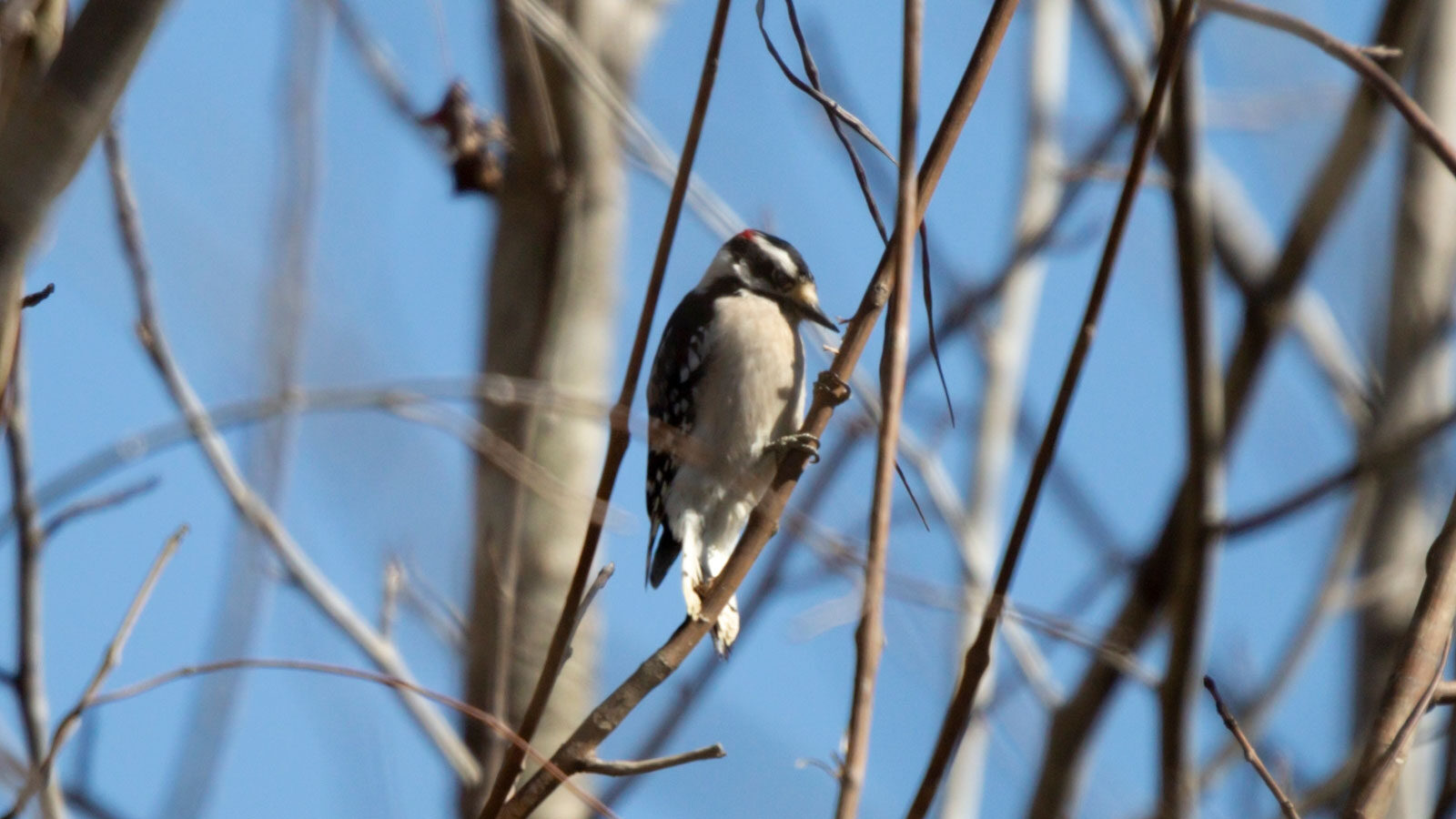
Did you know that yellow-bellied sapsuckers are migratory?
Yellow-Bellied Sapsuckers
at
a Glance

Key Features:
Yellow-bellied sapsuckers are black with red crowns, white stripes on their heads, and white or yellow underneath. Males have red throats.
Least Concern - Population Decreasing
Habitat:
Forests
nesting habits:
Yellow-bellied sapsuckers nest in tree cavities.
seasons yellow-bellied sapsuckers are active in our area:
Winter
Diet:
Sap, insects, and spiders
hunting Behavior:
Yellow-bellied sapsuckers forage by drilling for sap and catching insects in the air.
Commonly Confused With:
Downy Woodpeckers and Hairy Woodpeckers
Yellow-bellied sapsuckers are often confused with downy woodpeckers because both are black and white woodpeckers. Yellow-bellied sapsuckers are larger.

Yellow-bellied sapsuckers are often confused hairy woodpeckers with because both are black and white. Yellow-bellied sapsuckers a white patch on their wings.
